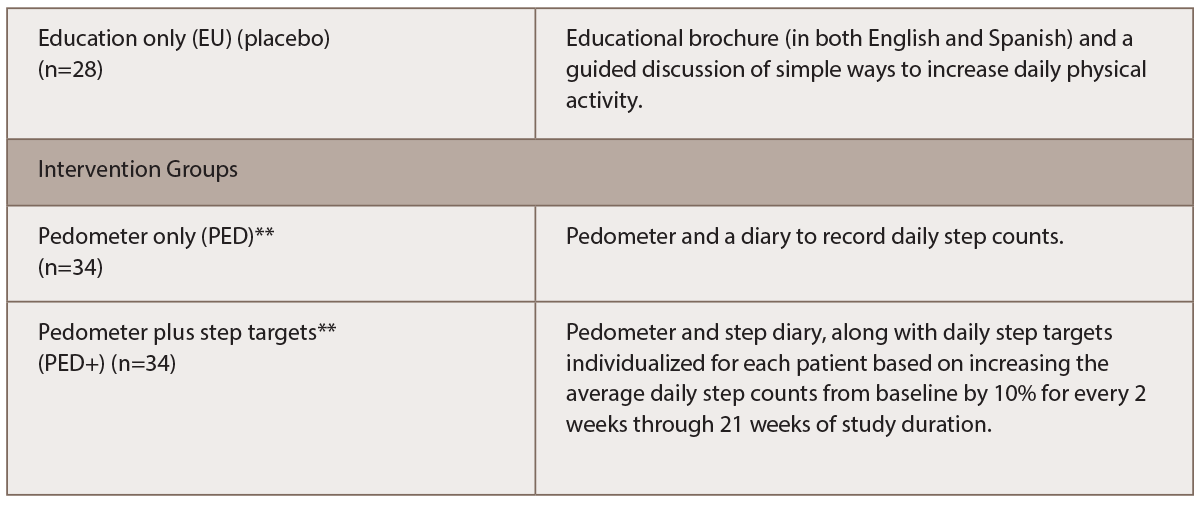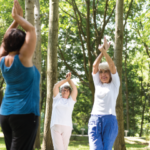Using the Patient-Reported Outcomes Measurement Information System (PROMIS) to measure fatigue, patients in both intervention groups also had a significant reduction in fatigue after 21 weeks compared with baseline scores (-3.2 for PED and -4.8 for PED+; P=0.02 and P=0.0002, respectively). No statistically significant differences were seen between the two intervention groups.
Patients in the placebo group, however, had no change in their physical activity and actually demonstrated decreased activity (-747 steps; P=0.14) and no improvements in fatigue (-1.6; P=0.26). (All patients in the study had a week of activity monitoring prior to randomization and another week of monitoring at the end of the study. The decreased activity noted in the placebo group is based on a comparison of the measurements of these two weeks of activity monitoring in this group.)

(click for larger image) Table 1: Treatment Groups*
* Patients in all three groups received an educational booklet and discussion about ways to increase daily physical activity.
** Patients were contacted every two weeks to collect recorded steps.
Along with showing significant improvements in physical activity and decreases in fatigue in the patients who wore pedometers, the study also found that patients who wore pedometers had significant improvements in self-reported disease activity, pain interference and depressive symptoms.
Dr. Katz emphasized that all of these improvements, along with the significant decrease in fatigue, were achieved simply by having patients wear pedometers to monitor their activity and instructing them to walk more. “We didn’t give an instruction on intensity or anything else,” she said. “The directive was just to walk more.”

Dr. Iversen.
Commenting on the study, Maura Daly Iversen, PT, professor and director of Rehabilitation and Epidemiology Trainee Program, Department of Physical Therapy, Movement & Rehabilitation Sciences, Northeastern University, Boston, suggests the simplicity of using pedometers may offer a needed approach to improving fatigue in RA patients.
“Fatigue is a well-known symptom in RA, but is often under-appreciated clinically,” says Dr. Iversen, who is also associate dean of new initiatives, Bouve College of Health Sciences. “A number of self-management programs provide strategies to help patients manage their fatigue via [such methods as] cognitive behavioral therapy (CBT), counseling, sleep hygiene, exercise and recommendations for physical activity (PA), but these can be time intensive for patients and resource intensive for clinics.”
This well-designed randomized controlled trial, she says, shows that pedometers “used with phone contacts to gather data increases physical activity among adults with established RA and that this increase in physical activity has positive effects on fatigue, as well as other RA-related symptoms.”
Get Patients to Move More
For clinicians who counsel patients with RA on how to manage fatigue and other RA-related symptoms, the study highlights the importance of getting patients to move more. To do this, Dr. Katz emphasizes the need for clinicians to offer a bit more guidance on how to increase physical activity beyond simply telling them to exercise more. Only offering educational information and discussion on the need to exercise is ineffective, as highlighted by the patients in the placebo group who actually decreased their level of physical activity.

